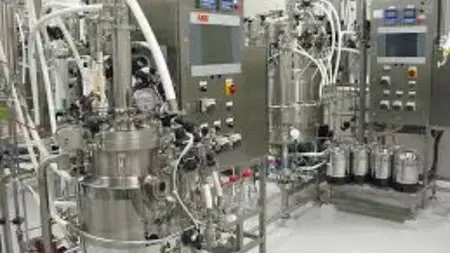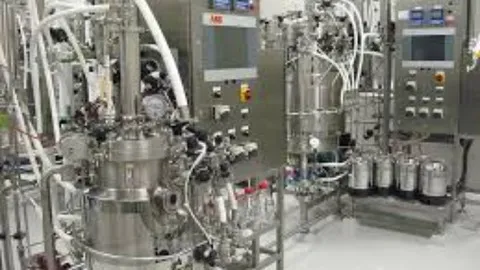Fermentation Technology
Last updated 2/2025
MP4 | Video: h264, 1280x720 | Audio: AAC, 44.1 KHz
Language: English | Size: 1.32 GB | Duration: 2h 49m
Last updated 2/2025
MP4 | Video: h264, 1280x720 | Audio: AAC, 44.1 KHz
Language: English | Size: 1.32 GB | Duration: 2h 49m
Scale up of bioreactor for commercializing the product
What you'll learn
Students will be well versed with fermentation media, inoculum preparation
Scale up Processes from the prespective of Industrial point
Students will be well versed with the instrumentation used in fermentation industry.
Bioreactor design features: Principal features of a typical (conventional) bioreactor.
Requirements
Basic Science knowledge is prerequiste
Description
The objective of scaling fermentation technology is to transition fermentation processes from a small-scale laboratory setup to a larger, industrial-scale operation while maintaining or improving efficiency, product quality, and economic viability. This scaling process involves addressing technical, biological, and economic challenges to ensure the process remains reproducible, stable, and cost-effective at higher production volumes.Maximize Product Yield and Quality:Ensure that the desired product (e.g., enzymes, pharmaceuticals, biofuels, or food products) is produced at high yields and maintains consistent quality.Reproducibility:Maintain the same growth conditions, metabolic activity, and product profiles observed in the lab during large-scale production.Optimize Process Economics:Minimize production costs by maximizing resource efficiency, reducing energy use, and selecting cost-effective raw materials.Ensure Scalability:Design fermenters and bioreactors that can accommodate larger volumes while ensuring proper mixing, oxygen transfer, temperature control, and sterility.Address Bioprocess Challenges:Mitigate issues such as shear stress, nutrient gradients, or oxygen limitations that can arise at larger scales.Regulatory Compliance:Ensure the scaled-up process meets industry standards and regulatory requirements for safety, quality, and environmental sustainability.Sustainability and Environmental Impact:Minimize waste generation, optimize the use of renewable resources, and design processes with lower environmental footprints.Adaptation to Market Demand:Enable flexible production capacity to meet varying market demands for fermentation-derived products.
Overview
Section 1: Introduction
Lecture 1 Introduction
Lecture 2 Design of fermenter
Lecture 3 Working principle of fermenter
Lecture 4 SCALE UP OF BIOREACTOR PILOT COMMERCIAL SCALE
Lecture 5 SCALING UP OF BIOREACTOR: PRODUCTION SCALE
Lecture 6 SCALING UP BIOLOGICAL AND NONBIOGICAL PARAMETERS PART A
Lecture 7 SCALING UP BIOLOGICAL AND NONBIOGICAL PARAMETERS PART B
Lecture 8 SCALING UP BIOLOGICAL AND NONBIOGICAL PARAMETERS PART C
Section 2: Notes
Lecture 9 Notes
Biochemical Engineers , Biotechnologist, Food Processers



